Meet Gabriel
Gabriel is a 6-year-old boy who lives with his parents and little sister. He loves horses and is surrounded by adoring grandparents and friends. Gabriel has encephalopathy, Lennox Gasteau syndrome (characterized by uncontrolled seizures), and cerebral visual impairment (CVI). His motor skills are quite limited, and he cannot sit independently. He is also non-verbal, though he uses his communication device like a champ!
Early Positioning Needs
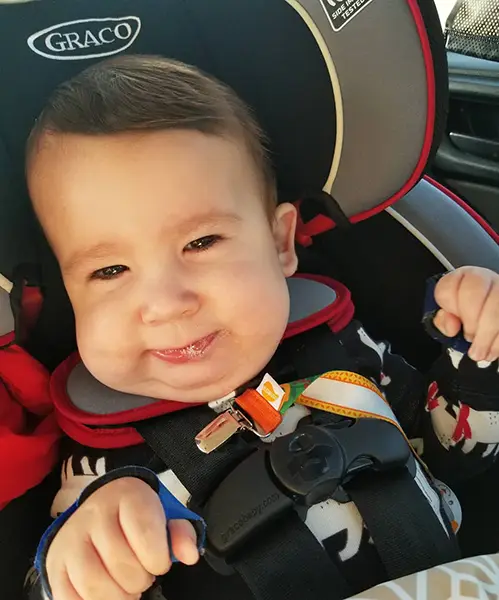
I first met Gabriel when he was 15 months old. At that time, he was already displaying intermittent muscle tone in some areas of his body and his hands were fisted. He often extended his back and neck, arching rearward. He spent most of his time being held or laying on his back on the floor. The family had a standard stroller, though this did not provide adequate postural support, resulting in his trunk collapsing. Gabriel was also using a Tumble Forms feeder seat on loan from his early intervention program, though the shape of this adaptive seat promoted a posterior pelvic tilt and flexed trunk. This seat lacked lateral trunk and head support, and he frequently arched while seated, placing him at risk of falling to the side.
Initial Equipment Recommendations
We recommended a ZIPPIE Voyage adaptive stroller with adequate postural support (advanced seating) for Gabriel. This was a great option, as the family could place the seating system on a stroller base for use outside and then place that same seating system on a high-low base inside their home. The family lived in a second story apartment with very steep stairs. They left the stroller base in the garage on the first level and carried the seat & Gabriel upstairs. The high-low base was also helpful for various activities such as therapies in the home. Both bases included a tilt which was critical for Gabriel's posture and managing his fatigue, particularly after a seizure. As Gabriel was on multiple seizure medications, he was at higher risk of sunburn and the stroller's canopy protected his skin. The stroller could be used in a reverse configuration, allowing his caregivers to carefully monitor him. Finally, the stroller base folded easily for transportation in the family's car and Gabriel rode in a standard car seat.
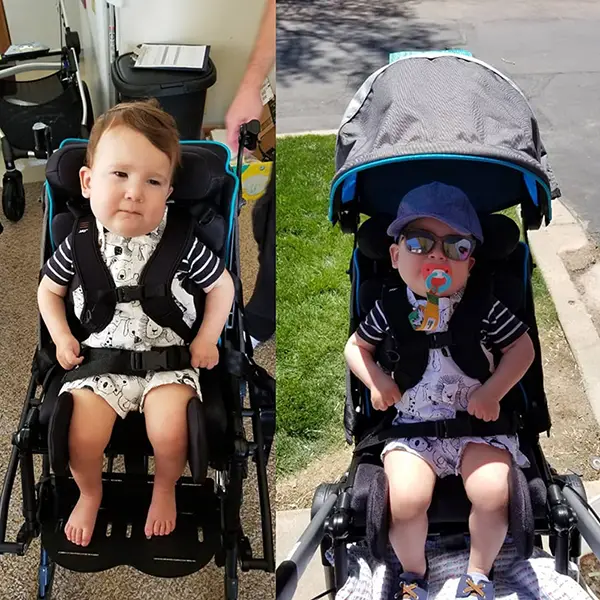
Seating in the adaptive stroller included a back with lateral trunk supports to keep his trunk in midline and shoulder straps to provide anterior trunk support to minimize his arching. A cushion with a pelvic positioning belt helped to maintain his pelvis in neutral as he had a tendency towards a posterior pelvic tilt. The angle-adjustable foot platform supported his feet, and lateral knee supports helped keep his lower extremities aligned with his hips. An adjustable contoured head support provided both occipital and some lateral head support to encourage a midline head position and limit neck hyperextension. Finally, a tray provided upper extremity support and a work surface. A high-low system allowed the Voyage to be used for activities at different heights, such as eating with his family or story time with other toddlers.
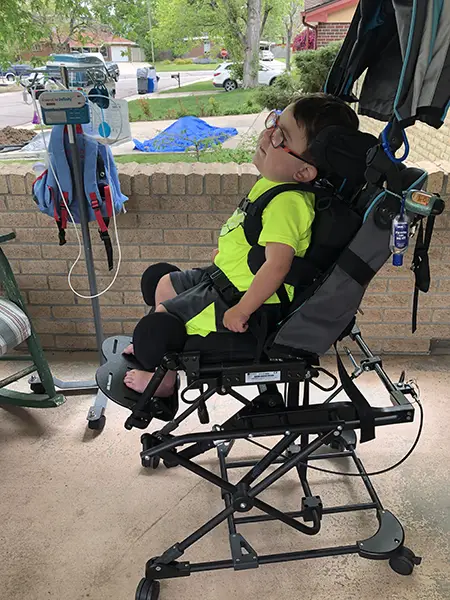
At the same time the stroller was recommended, we also recommended a bath chair, a referral to a physiatrist at our local children's hospital, and further evaluation to develop access for play and communication. We discussed pursuing a stander in the future, as well as evaluating his sleep position.
Gabriel Is Growing! New Equipment Needs
Within a few years, Gabriel had outgrown the adaptive stroller and his positioning needs had changed, too. Secondary to his increased muscle tone, he was beginning to develop issues at his spine and hips. He now demonstrated reducible lateral spinal flexion on his right side. As a result, we recommended a molded seating system. The Aspen Seating Orthosis (ASO) is a molded seating system that provides intimate contact with the body for significant pressure distribution and postural control. Gabriel required this level of postural support in order to maintain optimal spinal alignment. As he was young, growth was a concern. The ASO includes a three-year warranty to accommodate growth, primarily in seat depth and back height. The ASO is a product of Aspen Seating and Ride Designs and is currently only available in the Denver metro area. Another option that may have met Gabriel's needs outside this area would have been a Ride Designs seat and back.
Gabriel was also demonstrating neck lateral flexion on his left side and required more head support. A head support with an occipital pad, suboccipital pad, and lateral pads was recommended to improve his head alignment.
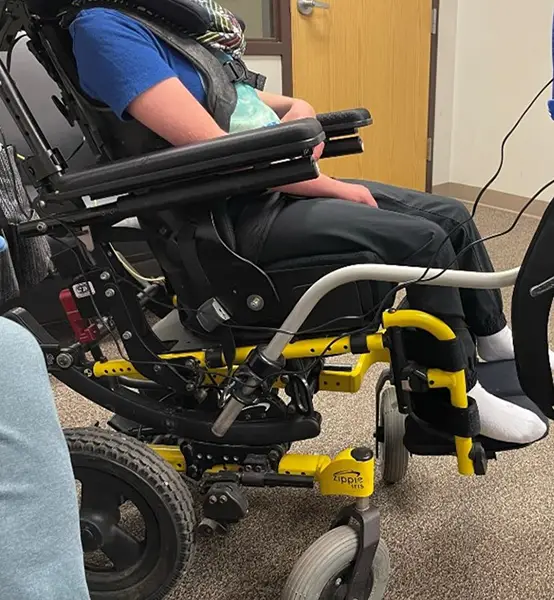
Gabriel also required a new dependent mobility base and a manual tilt-in-space wheelchair was recommended: the ZIPPIE IRIS. This wheelchair base also offers a canopy like on his stroller. The center-of-gravity tilt was important, as Gabriel must travel with extensive medical equipment and supplies which are placed in a backpack hung on the push handles. This could otherwise make the base tippy. As Gabriel uses a communication device, this is also easier to mount securely to a manual wheelchair than most adaptive strollers.
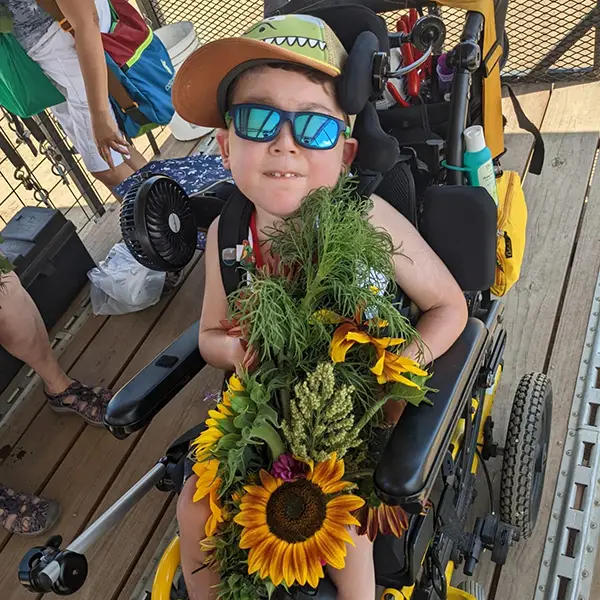
Tilt angles are incorporated throughout the day, depending on the activities Gabriel is involved in and his neurological state. He is able to sit at a greater upright tilt during activities where he is engaging in things he enjoys. When the family went into a field of sunflowers, Gabriel sat with greater upright positioning while enjoying the beauty of the scene. Gabriel showed an ability to hold his trunk and head against gravity as he held the beautiful sunflowers. Gabriel loves horses and chose to be a cowboy riding a horse for Halloween. When looking at the photo of him in his costume, it is apparent that he is able to sit in a more upright position with his head held upright and looking at the photographer.
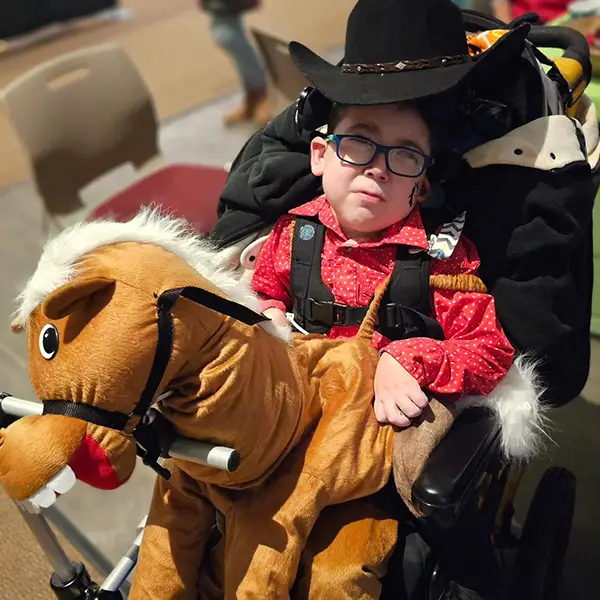
The family changes the degree of tilt rearward for a variety of reasons. If he has had a seizure, which is a frequent occurrence, he often needs to be significantly posteriorly tilted as he is quite tired, and his head control decreases during this post-ictal phase. He is also posteriorly tilted during g-tube feedings, as this results in less reflux for him. In general, if he is having more difficulty maintaining his posture or is more fatigued, he is tilted more rearward.
Gabriel uses a switch by his right hand to control toys and devices for play as well as his communication device via auditory scanning. Gabriel was eventually able to successfully use a power wheelchair using switches by his right hand as well as both of his feet. The family has moved to a more accessible home and now has an accessible vehicle.
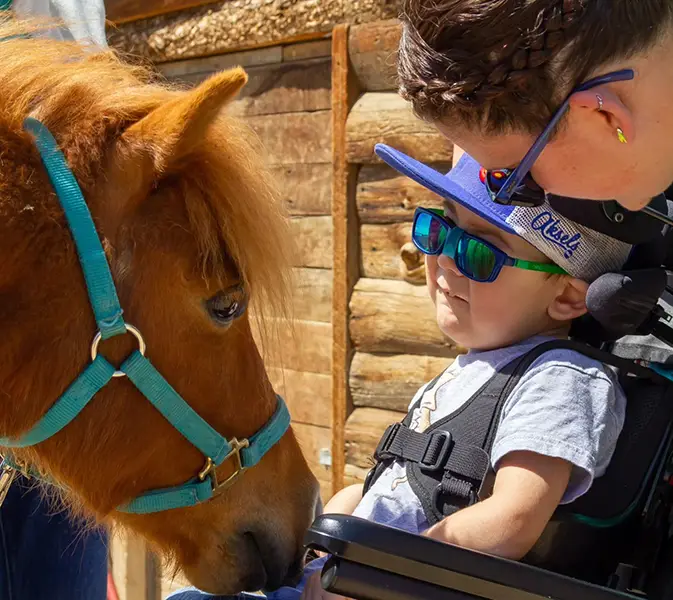
Always keeping busy, Gabriel and his family enjoy trips out in their community, including therapeutic horseback riding. The manual wheelchair and seating system allow them to go to multiple locations and manage a variety of terrains. As Gabriel continues to grow, his seating system can grow with him and eventually be replaced as needed. The ZIPPIE IRIS can be grown quite a bit to continue meeting his needs, too.
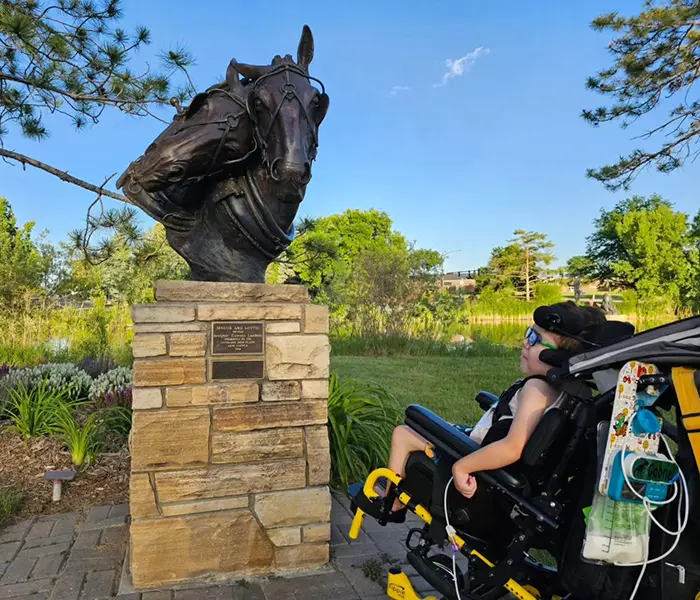
Michelle Lange is an occupational therapist with over 39 years of experience and has been in private practice, Access to Independence, for over 19 years. She is a well-respected lecturer, both nationally and internationally, and has authored numerous texts, chapters, and articles. She is the co-editor of Seating and Wheeled Mobility: a clinical resource guide. Michelle is a RESNA Fellow and member of the Clinician Task Force. Michelle is RESNA-certified ATP and SMS.